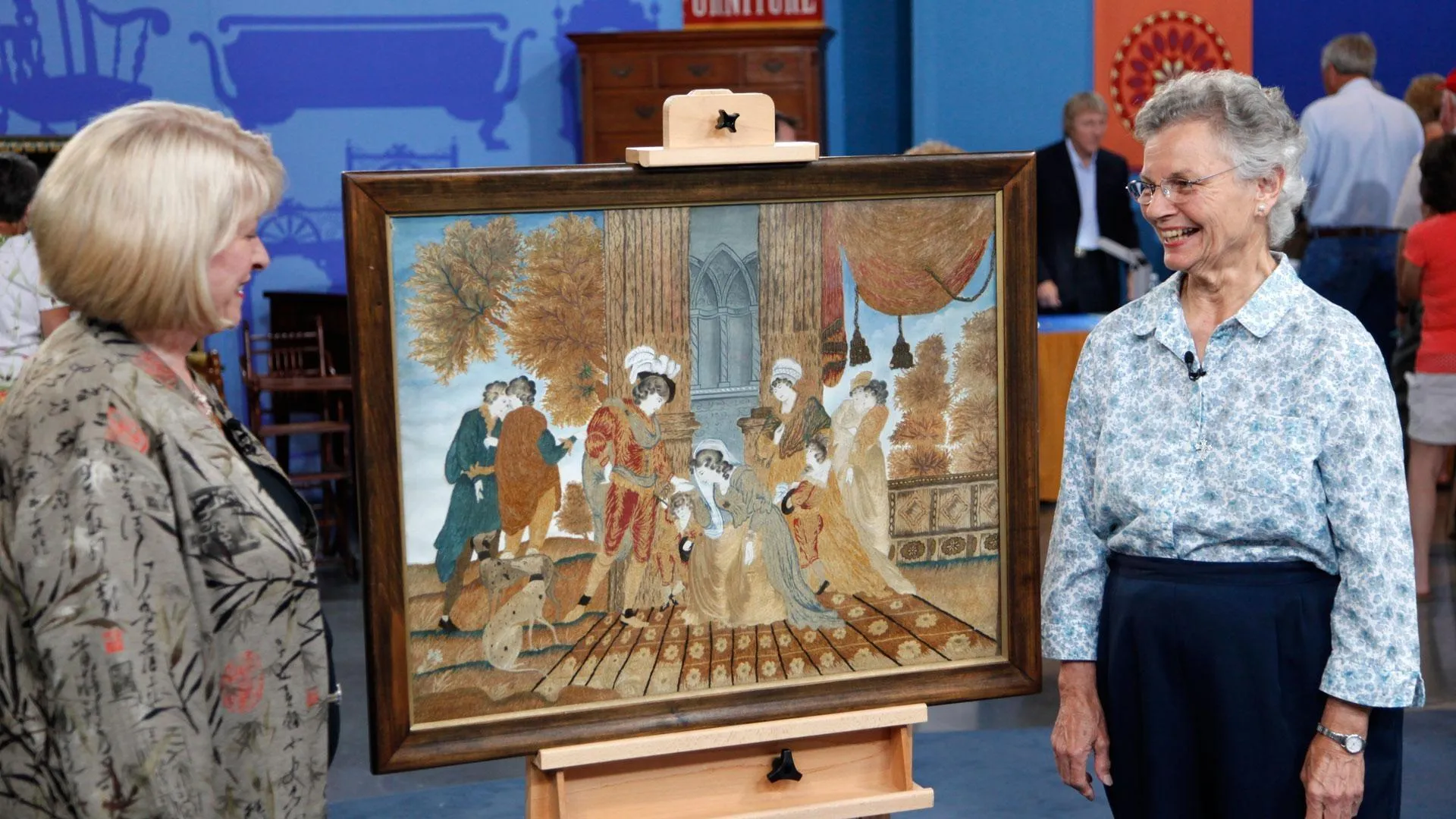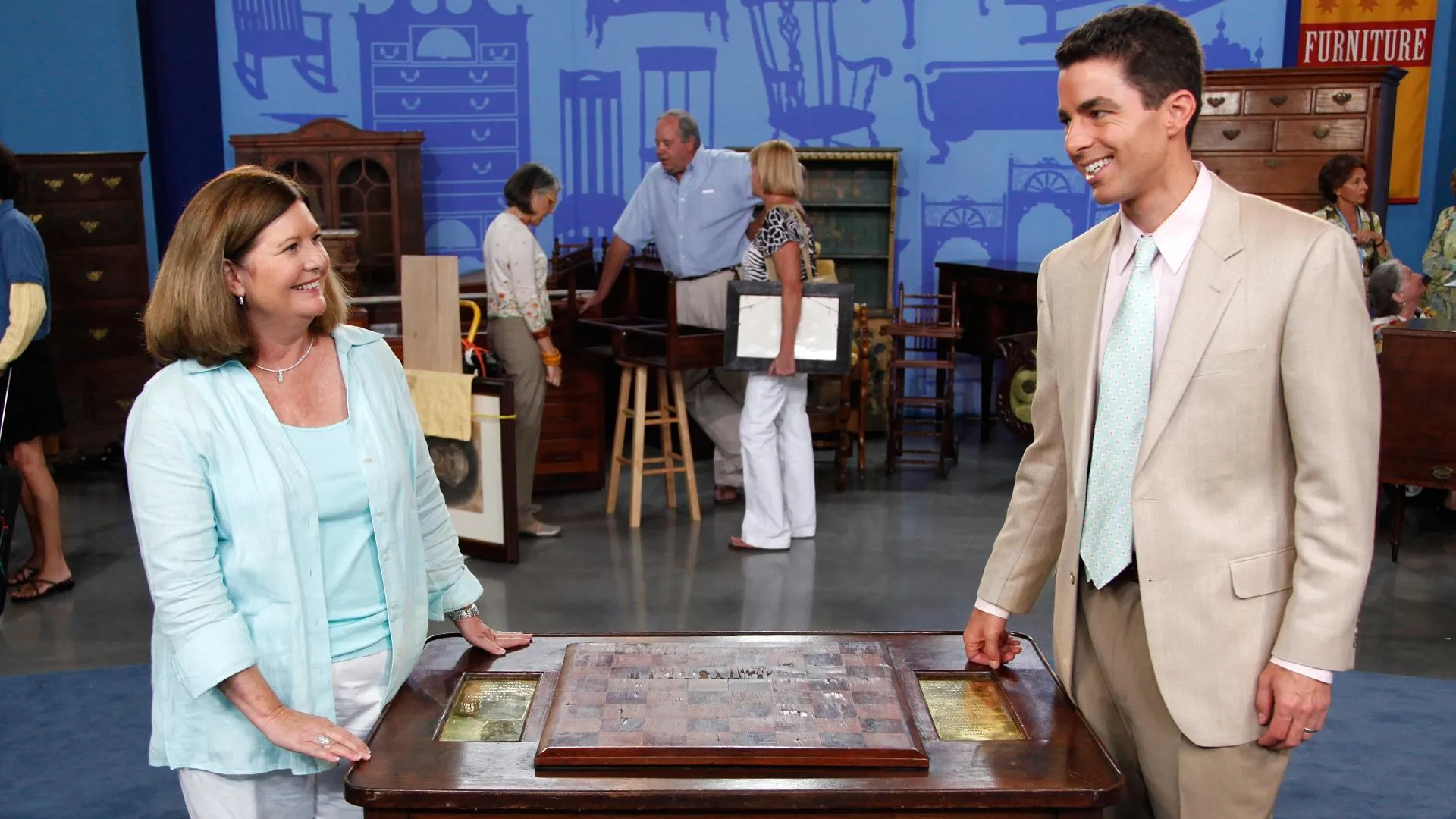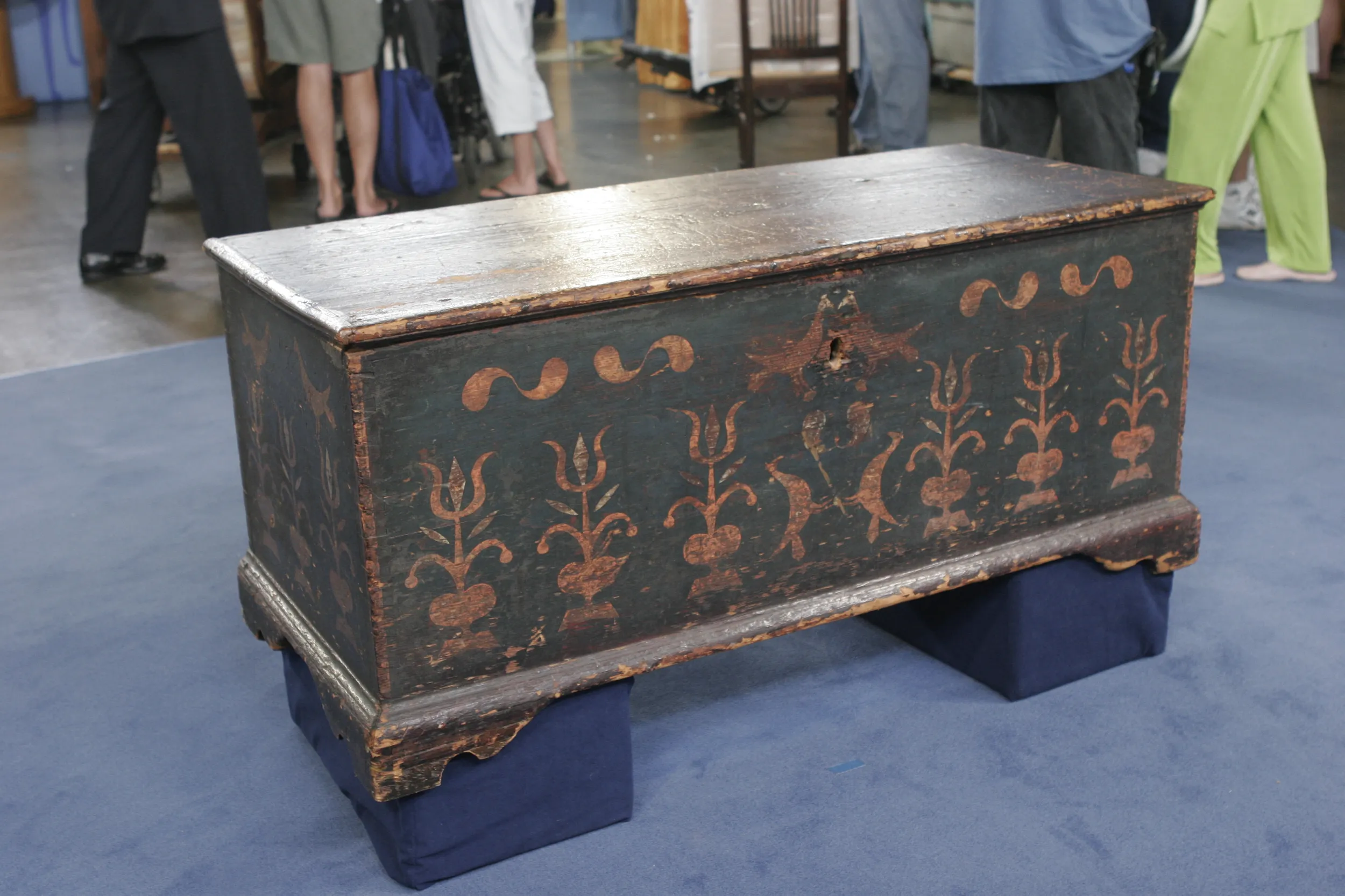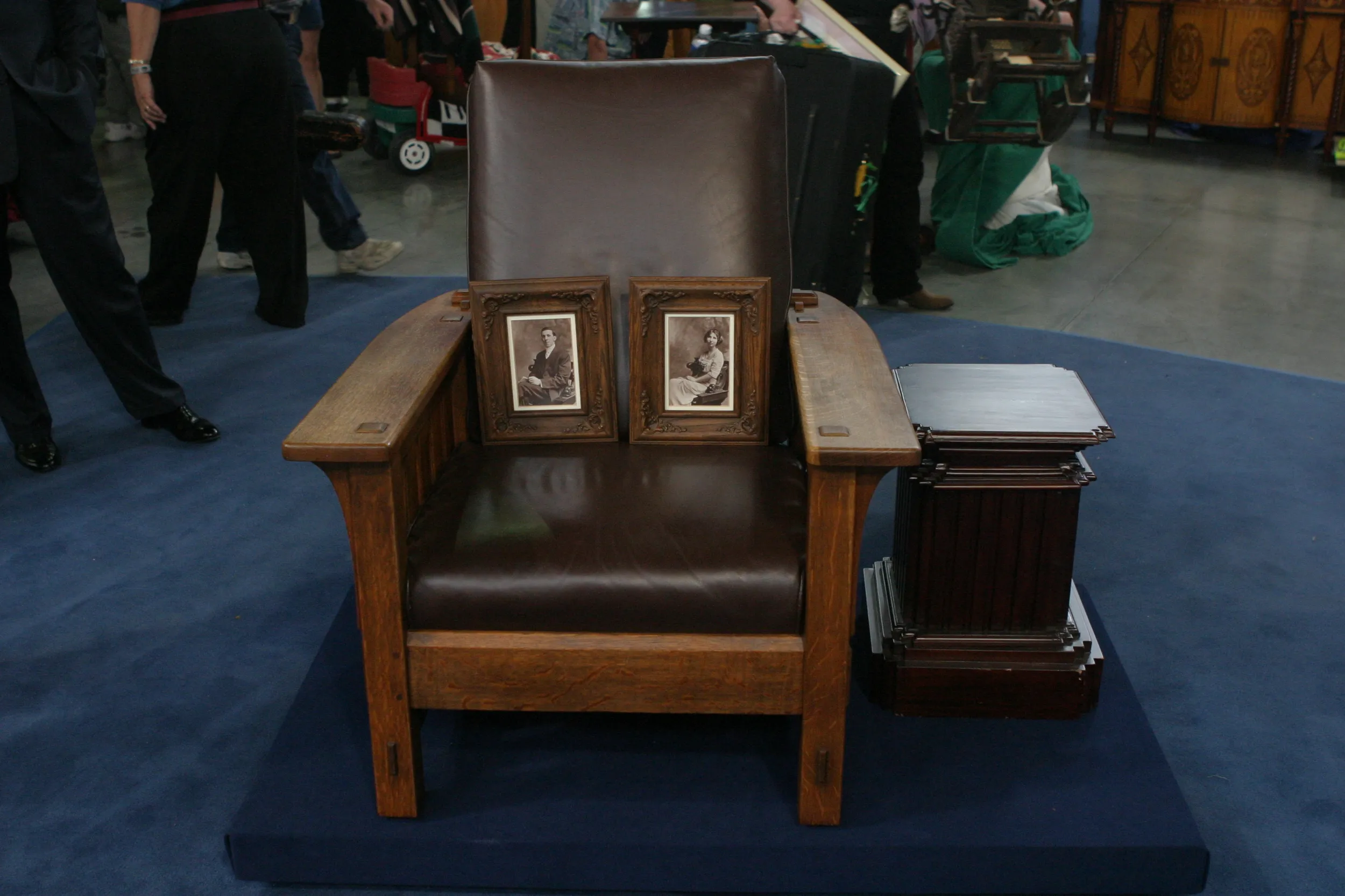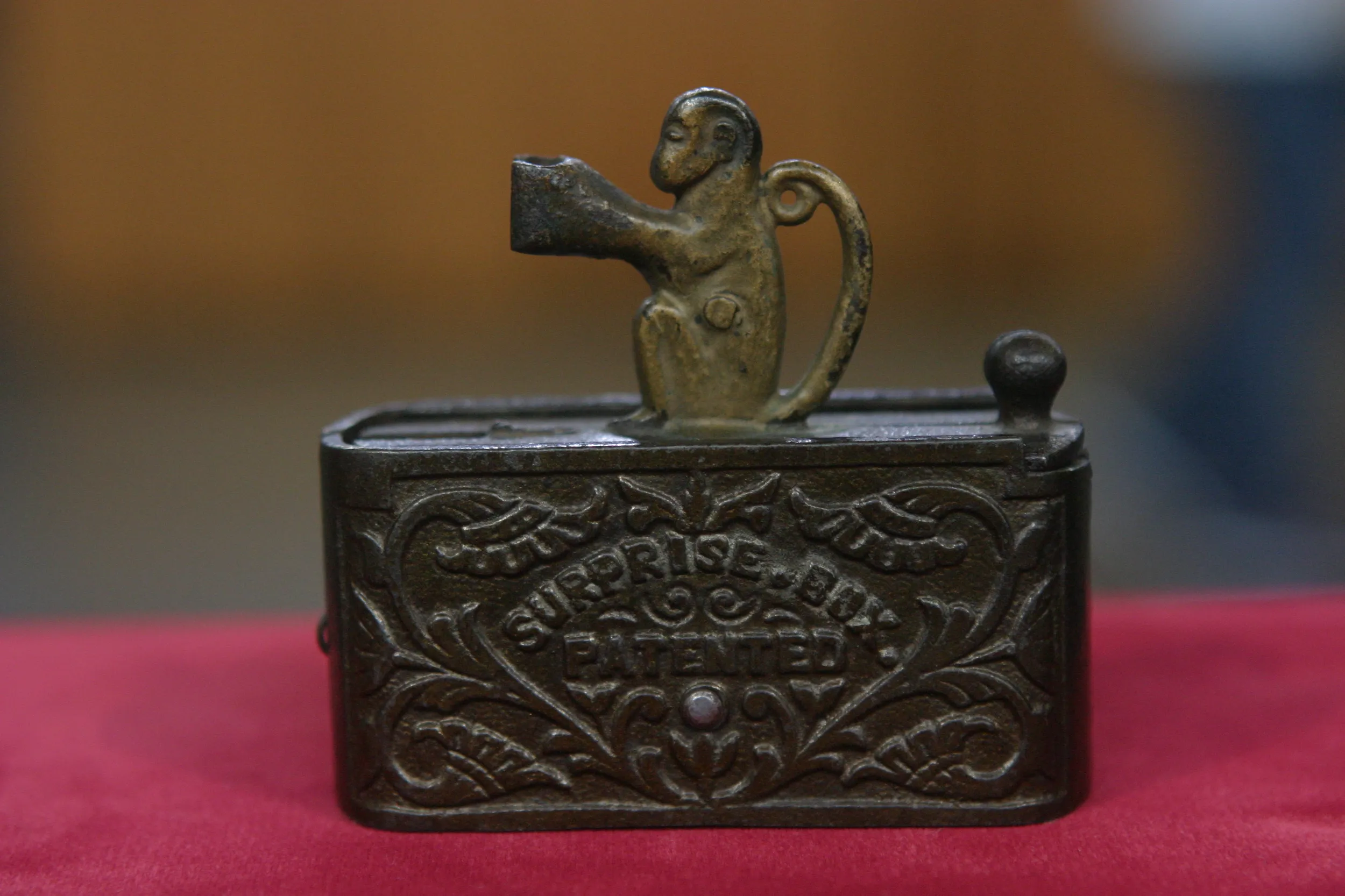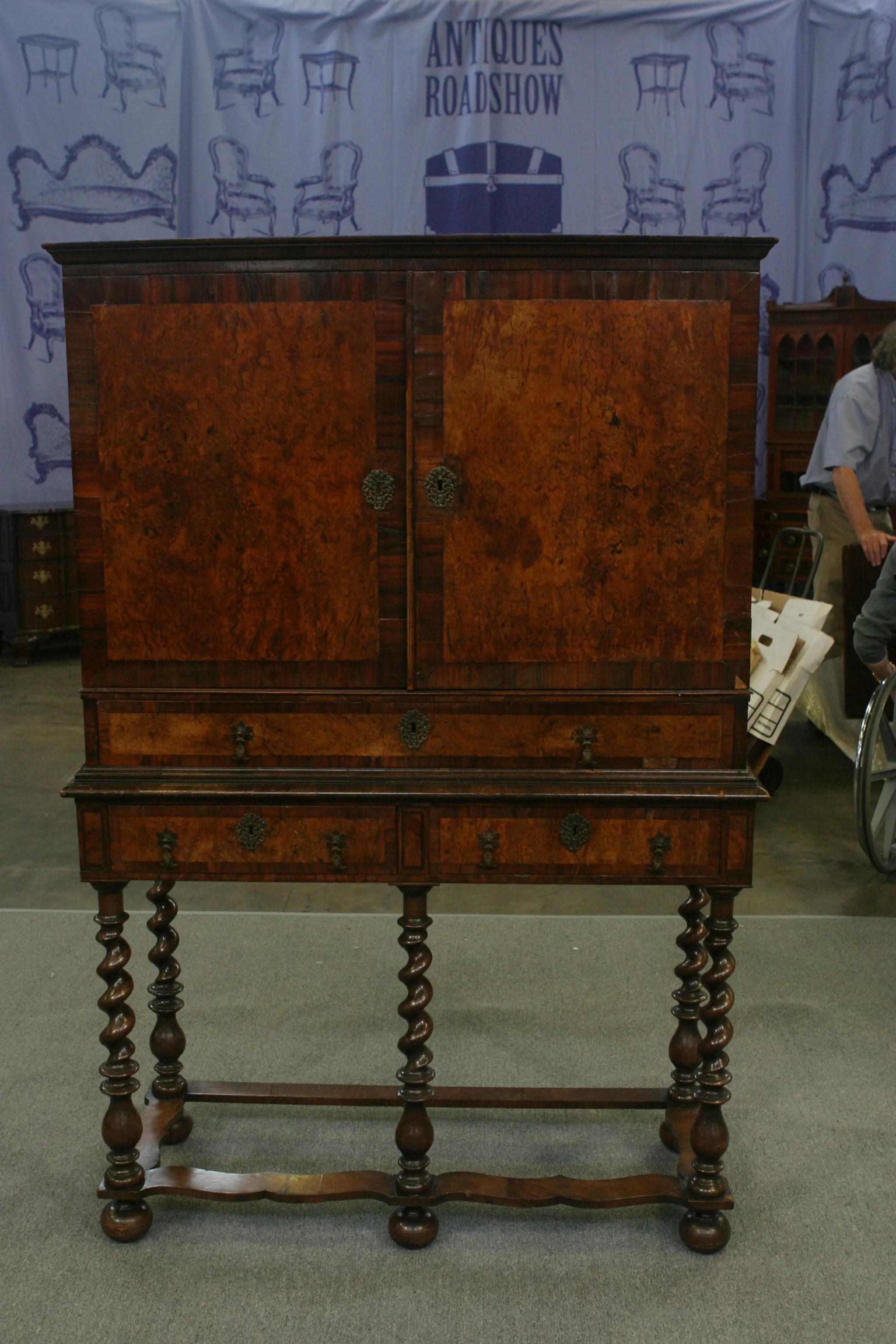GUEST: This table I found in my mother and stepfather's attic after they both died. It's lucky that I brought it to my home because Hurricane Katrina hit, and their little cottage was washed away.
APPRAISER: Wow.
GUEST: But at my own home, it did go through Hurricane Katrina also. So it's in rough repair right now. We received 14 feet of water and it was on the second floor, so the water was just probably up to the sides. This table originally was from New Orleans, from the Paul Morphy Chess Club, which my stepfather was a member of. And I have happy memories of going there at Mardi Gras. When the club closed, he became the owner of this.
APPRAISER: Well, it's a fascinating table. And as just an object, it's interesting, but what really makes it here are these engraved brass plaques. Right. It says, "The following chess masters have played on this table." And it goes on to list an amazing "who's who" of the great chess players of the late 19th and early 20th century. The first name on here is Jose Raul Capablanca, and that's a very famous name in the chess world. He was a Cuban-born player. Do you play yourself?
GUEST: I do not, but I do play checkers.
APPRAISER: You do? Well, the other side... Do you consider yourself a checker master?
GUEST: No, I do not.
APPRAISER: A lot of people think of New Orleans as a great jazz town. Less known is the fact that it was also a very important chess town. Paul Morphy, who the club was named after, lived in New Orleans. He was an amazing chess genius. In 1859, he played a game against eight other chess players simultaneously, blindfolded.
GUEST: Wow.
APPRAISER: To prove just how great he was. Just as a table, it probably dates to the 1860s to maybe 1880 at the latest.
GUEST: Okay.
APPRAISER: That's before the Paul Morphy Chess Club.
GUEST: Club, right.
APPRAISER: But there were a number of other clubs in New Orleans for chess players during the mid-19th century. The table itself is made of walnut. We have the beautiful rosewood and birdseye maple playing board here. It's a tricky thing to price because just as a table, it's really only worth a few hundred dollars.
GUEST: Right.
APPRAISER: So you're pricing here the historical aspect of it to people who collect chess sets, people who are great players themselves. Chess was a big deal then, and I was reading that right after Katrina, one of the first signs that New Orleans was coming back was that the chess games were starting...
GUEST: Oh, really, okay.
APPRAISER: ...in the market and in the French Quarter. But that's all part of the history of this table. You've got... the scars of Katrina are kind of a continuation of this long history. So I would think at auction, we might think of $3,000 to $5,000 as a good estimate. To the right person, it might even be worth $8,000.
GUEST: Right, okay.
APPRAISER: But it's a wonderful survivor and document.
GUEST: It is a survivor.

